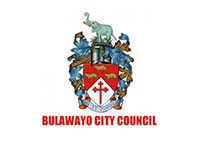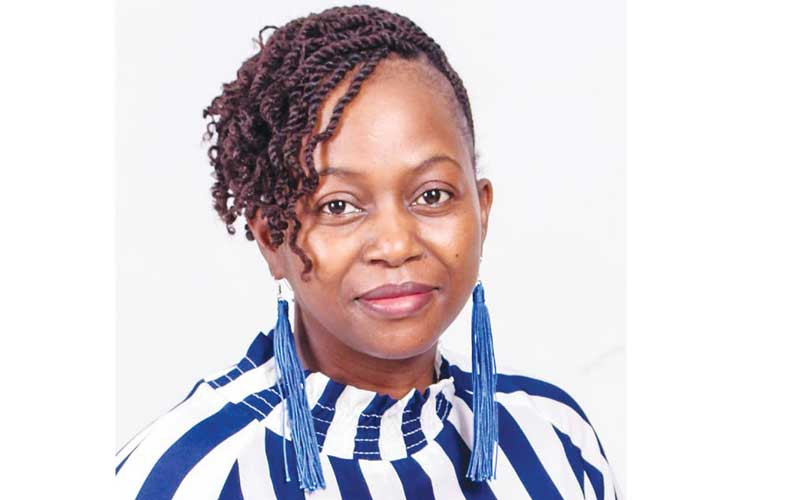
In an exhibition of about 13 paintings and 19 drawings, Zimbabwean-born artist Lionel Tazvitya Mbayiwa interrogates the role of the colonists and the postcolonial leaders, in plunging the once promising country into decay and chaos.
Takambosvika sei pano?/How did we end up here? is Lionel Tazvitya Mbayiwa’s second solo exhibition, running at Sisonke Gallery in Cape Town. Mbayiwa grapples with the theme of colonialism or imperialism and contemplates its disruption of the African peoples’ way of life and their cultures in the process of dispossessing and displacing them from their ancestral lands, coercing them into an exploitative labour system under the prevailing capitalist mode.
He engages internal and external migration, with people forcibly moving from rural areas to cities and metropolitan areas, as well as across the national (colonial) borders, mostly in search of greener pastures. With this body of work encompassing 13 colourful paintings and 19 smaller black-and-white drawings, with seven neatly framed, Mbayiwa asks a pertinent question: How did we end up here?
The artist draws inspiration from his humble childhood experiences of a rural upbringing. Heads and horns of bulls and cows prominently feature in his work as he fondly recounts stories of herding cattle in the pastures. The task demanded that one search for lush pastures. In the painting Kumafuro (In the pasture), which is dominated by a giant beast and a small herd to its right, the artist used a gold colour in the background symbolising the richness of the pastures. The size of the beast suggests that it is the leader of the herd. Its striding legs denote stubbornness
The artwork evokes Musaemura Zimunya’s poem Cattle in the rain, which paints the picture of a little boy struggling to drive the herd back to the kraal. In the poem, Gotooma, the stubborn ox, refuses to move as the rain pours, making the barefooted boy cry and complain. The little boy has no raincoat. This childhood scenario experienced by the artist can be compared to his current experiences living and working far from home where he encounters numerous obstacles.
In the countryside, a herd of cattle is the cornerstone of the African mode of life. Cattle are a source of power in pulling wagons or carts and pulling the plough. Cultural ceremonies and traditional rituals cannot be performed without slaughtering one. Beasts are a form of currency in the payment of dowry or lobola, effectively tying families together.
A bull usually carries the name of the family. As such, when the colonialists imposed a series of taxes aimed at limiting the number of huts (rondavels), cattle, dogs, etc a family was entitled to, the African way of life was severely disrupted. Families had to let go of their cattle (wealth) for a pittance. They were left impoverished.
The situation worsened with the outbreaks of rinderpest and foot-and-mouth disease which ravaged already dwindling herds. The able-bodied family members had no choice but to migrate and become labourers on farms and mines, and in the towns and cities set up by the colonialists exploiting local labour, to earn an income to meet the taxes imposed on them in a bid to secure what was left. Mbayiwa captures this well in Ten shillings, a title inspired by the value of the Hut Tax imposed in 1894.
- I rejected Zanu PF scarf: Burna Boy
- NMB workers take on employer
- Mbavara eyes to resurrect Matavire’s music legacy
- I rejected Zanu PF scarf: Burna Boy
Keep Reading
Dzimba dzamabwe features a depiction of Zimbabwe’s national emblem, the stone-carved bird figurine believed to be either the fish eagle (hungwe) or bateleur eagle (chapungu), which are both sacred to the Karanga cluster of Shona people residing around Great Zimbabwe, a world heritage site famous for its sophisticated granitic walls built without mortar.
Built by the ancestors of the Shona, the sacred living site was the capital of the ancient Munhumutapa Kingdom which ruled over present-day Zimbabwe and stretched into Mozambique, reaching its peak between the 11th and 15th centuries. In the work, Mbayiwa depicts snippets of the great piece of architecture distinctly marked by its chevron and chequered patterns.
Considered evidence of an early progressive African civilisation, the Shona empire was strong politically and economically, and traded with the Arabs at Sofala and the Portuguese along the Mozambican coast. Archaeologists and cultural heritage scholars who have engaged with the site have managed to exhume early Chinese porcelain, gold necklaces and bracelets as evidence of the long-distance trade. In the piece, Mbayiwa includes ivory, a commodity the empire was known to export.
Indeed, colonialism disrupted the lives of the descendants of the people who built Great Zimbabwe, but what also boggles the artist’s mind are the failures of the leadership of the nation in the postcolonial phase. In Ruoko rwunopa ndoruba he depicts the stretched palm of the politician which steals from the citizen while giving back a drop from the stolen chunk as a gesture of benevolence. Constituting what Chinweizu Ibekwe calls the “black compradors” (or Amílcar Cabral’s “native petty bourgeoisie”) who took over after independence, promising to restore Zimbabwe to its former glory, drawing inspiration from the ancient civilisation, the leadership has destroyed what Julius Mwalimu Nyerere considered to be “the jewel of Africa”.
They have plunged the promising country into a state of decay and chaos characterised by a lack of respect for the rule of law, consistently rigged elections and corruption as captured in Gold Mafia, the recently aired Al Jazeera documentary on corruption in Zimbabwe (and South Africa). As such, it is not surprising that the young and economically active continue to leave the country en masse. Mbayiwa is part of that generation.
“I wish I was a bird. A bird enjoys the freedom of movement. It can fly anywhere,” the artist says, pointing to a piece titled Hupenyu hweshiri. The painting invokes the critical contemporary issue of migration, a hot topic in South Africa and parts of the world. Besides the pull factors, push factors like political instability and religious and sexual persecution force people to migrate.
However, travel from one country to the other is not easy, especially in Africa. Moreover, in host countries migrants struggle to apply for and renew permits, rendering them illegal. Currently, news headlines in South Africa are dominated by the pending case of the revoked Zimbabwe Exemption Permit, with the former permit holders living in limbo, uncertain of the final verdict.
Migrants experience persistent Afrophobic attacks by irate and disgruntled citizens. Only last year, Elvis Nyathi, a Zimbabwean gardener, was burned to death in Diepsloot, Johannesburg. The artist wishes he was as free as a bird that knows no colonial boundary and does not need to acquire a passport and permit to live where it desires.
Quite fascinating is Mbayiwa’s slow process of making the work. He applies oil pastel and acrylic on paper or canvas, in layers which he leaves to dry over time before scraping on the surface paint, resulting in faded exteriors with intersecting scratches and marks that reveal the underlying hidden forms and colours. It is a process akin to an archaeologist excavating the upper layer of soil to reveal what was buried by several phases of sedimentation.
In this case, the process invokes the notion of “sankofa”, an Akan concept which translates to “go back and get it”, as the artist traces historical and autobiographical narratives. A section of the exhibition has the artist’s trademark distorted and anthropomorphic ink-on-paper drawings derivative of Francis Bacon’s disturbing and provocative paintings. Cross-hatching in ink is a technique that requires patience. That the artist has several of them in the exhibition hints at his commitment to his work. Yet he casually talks about the drawings as the output of his experimentation with form.
There is one aspect we strongly feel would have strengthened this exhibition had it been considered. The works on display are too many for the small space at Sisonke Gallery.
Spacing them well would have allowed individual works to breathe and speak out strongly. In the section with drawings, the extra layer of framed works appears too high and therefore not aligned well with the other works.
This placement is not suitable for young and short people. Perhaps the artist should have considered working with a curator and an exhibitions designer to conceptualise and plan the layout.
Takambosvika sei pano?/How did we end up here? is at Sisonke Gallery on Bree Street (April 20 to May 28, 2023).







